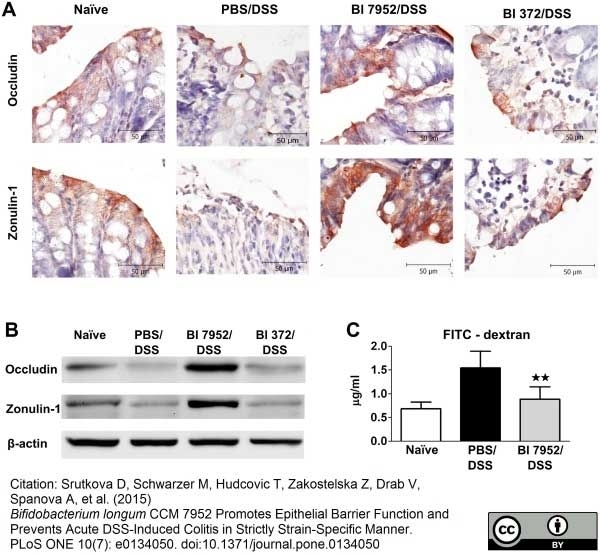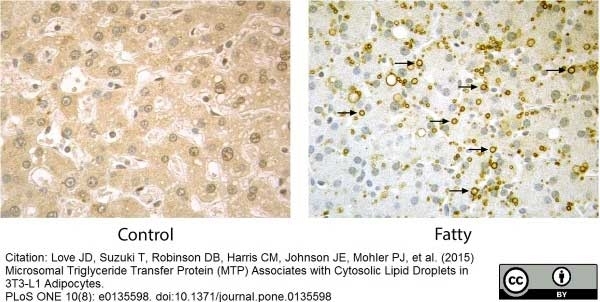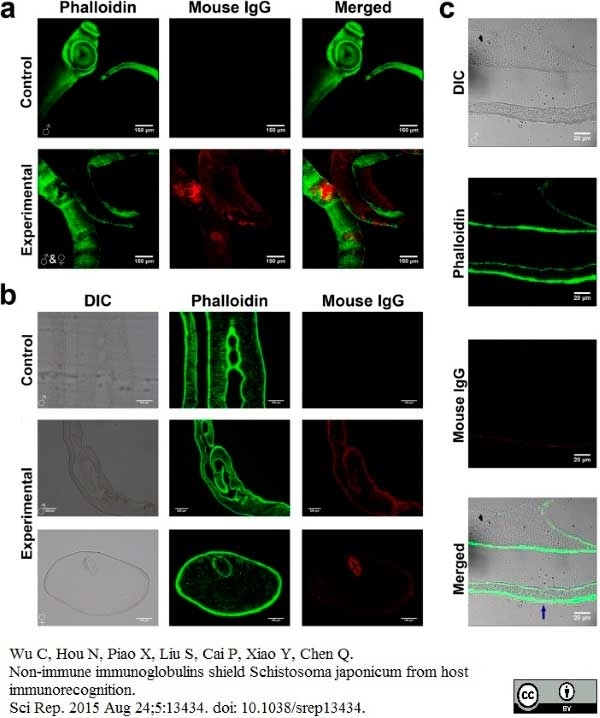Aqueous Mounting Medium



Permanent Aqueous Mounting Medium
- Product Type
- Accessory Reagent
- Specificity
- Aqueous Mounting Medium
| Permanent aqueous mounting medium is a unique aqueous-based mounting medium designed for the permanent preservation of tissue sections and cell smears which have been immunohistochemically stained with chromogens which cannot be dehydrated with organic solvents. This mounting media is suitable for use with peroxidase and alkaline phosphatase chromogens, Fast red, BCIP/NBT, BCIP/INT, Aminoethylycarbazole (AEC) and DAB/DAB with cobalt and nickel chromogens, and is also compatible Nuclear fast red (NFR) counterstains. Permanent aqueous mounting medium is not suitable for use with Haematoxylin and Eosin (H and E), Methylene blue or Methyl green counterstains. Use is also not advised on frozen tissue sections with a high lipid content such as brain, or tissue sections undergoing necrosis. |
- Preservative Stabilisers
- BUF058C, BUF058B: 0.09% Sodium Azide (NaN3)
- BUF058A: 0.09% Sodium Azide (NaN3)
- Regulatory
- For research purposes only
- Guarantee
- Guaranteed until date of expiry. Please see product label.
| Application Name | Verified | Min Dilution | Max Dilution |
|---|---|---|---|
| Immunohistology - Frozen | |||
| Immunohistology - Paraffin |
- Instructions For Use
- Ensure product is at room temperature before use.
Do not use non-polar solvent on samples prior to applying this medium.
1. Rinse slide for mounting with distilled or deionized water, touch-dry slide edges on paper towel and place slide on flat surface.
2. Invert vial and open dropper to remove air bubbles.
3. Apply 3-4 drops of mounting medium directly onto specimen and tilt slide back and forth to distribute evenly. A plastic pipette tip may also be used for spreading, taking care not to damage specimen. Remove excess medium by touching slide edges on paper towel.
4. Leave slide to stand for 1-2 hours at room temperature (25oC). Alternatively slide can be heated for 40-60 minutes at 37-40oC.
Mounted slide can now be visualized under a microscope:
1. For oil immersion lens, the oil can be dropped directly onto the mounted specimen, once the mounting medium has dried. A coverslip is not required. The oil can be later removed by wiping with Kim wipes.
OR
2. For oil immersion lens, apply 1-2 drops of preferred organic mounting medium on top of dried mounted specimen and cover with coverslip.
To remove coverslip or mounting medium, soak the slide for 5-10 minutes in warm water (37oC) until medium is dissolved. Give slide final rinse in warm water. Remount if required. - Ensure product is at room temperature before use.
Do not use non-polar solvent on samples prior to applying this medium.
1. Rinse slide for mounting with distilled or deionized water, touch-dry slide edges on paper towel and place slide on flat surface.
2. Invert vial and open dropper to remove air bubbles.
3. Apply 3-4 drops of mounting medium directly onto specimen and tilt slide back and forth to distribute evenly. A plastic pipette tip may also be used for spreading, taking care not to damage specimen. Remove excess medium by touching slide edges on paper towel.
4. Leave slide to stand for 1-2 hours at room temperature (25oC). Alternatively slide can be heated for 40-60 minutes at 37-40oC.
Mounted slide can now be visualized under a microscope:
1. For oil immersion lens, the oil can be dropped directly onto the mounted specimen, once the mounting medium has dried. A coverslip is not required. The oil can be later removed by wiping with Kim wipes.
OR
2. For oil immersion lens, apply 1-2 drops of preferred organic mounting medium on top of dried mounted specimen and cover with coverslip.
To remove coverslip or mounting medium, soak the slide for 5-10 minutes in warm water (37oC) until medium is dissolved. Give slide final rinse in warm water. Remount if required. - Ensure product is at room temperature before use.
Do not use non-polar solvent on samples prior to applying this medium.
1. Rinse slide for mounting with distilled or deionized water, touch-dry slide edges on paper towel and place slide on flat surface.
2. Invert vial and open dropper to remove air bubbles.
3. Apply 3-4 drops of mounting medium directly onto specimen and tilt slide back and forth to distribute evenly. A plastic pipette tip may also be used for spreading, taking care not to damage specimen. Remove excess medium by touching slide edges on paper towel.
4. Leave slide to stand for 1-2 hours at room temperature (25oC). Alternatively slide can be heated for 40-60 minutes at 37-40oC.
Mounted slide can now be visualized under a microscope:
1. For oil immersion lens, the oil can be dropped directly onto the mounted specimen, once the mounting medium has dried. A coverslip is not required. The oil can be later removed by wiping with Kim wipes.
OR
2. For oil immersion lens, apply 1-2 drops of preferred organic mounting medium on top of dried mounted specimen and cover with coverslip.
To remove coverslip or mounting medium, soak the slide for 5-10 minutes in warm water (37oC) until medium is dissolved. Give slide final rinse in warm water. Remount if required.
References for Aqueous Mounting Medium
-
Wheeler, J.L. et al. (2013) Novel cellular targets of AhR underlie alterations in neutrophilic inflammation and inducible nitric oxide synthase expression during influenza virus infection.
J Immunol. 190 (2): 659-68. -
Mbita, Z. et al. (2015) The association of RBBP6 variant 3 expressions with apoptosis in human immunodeficiency virus-associated nephropathy (HIVAN).
Exp Mol Pathol. 99 (1): 74-80. -
Brunnström, Å et al. (2015) On the biosynthesis of 15-HETE and eoxin C4 by human airway epithelial cells.
Prostaglandins Other Lipid Mediat. 121 (Pt A): 83-90. -
Srutkova, D. et al. (2015) Bifidobacterium longum CCM 7952 Promotes Epithelial Barrier Function and Prevents Acute DSS-Induced Colitis in Strictly Strain-Specific Manner.
PLoS One. 10 (7): e0134050. -
Love, J.D. et al. (2015) Microsomal Triglyceride Transfer Protein (MTP) Associates with Cytosolic Lipid Droplets in 3T3-L1 Adipocytes.
PLoS One. 10 (8): e0135598. -
Wu C et al. (2015) Non-immune immunoglobulins shield Schistosoma japonicum from host immunorecognition.
Sci Rep. 5: 13434. -
Dlamini, Z. et al. (2019) RBBP6 Is Abundantly Expressed in Human Cervical Carcinoma and May Be Implicated in Its Malignant Progression.
Biomark Cancer. 11: 1179299X19829149. -
Dlamini, Z. et al. (2021) Genomics and molecular analysis of RPL9 and LIAS in lung cancer: Emerging implications in carcinogenesis
Informatics in Medicine Unlocked. 25: 100698.
View The Latest Product References
-
Lai, H.J. et al. (2020) Electrophysiological parameters that contribute to the pathogenesis of familial amyloid polyneuropathy caused by transthyretin mutations.
J Neurol Sci. 413: 116810.
BUF058C
BUF058B
BUF058A
If you cannot find the batch/lot you are looking for please contact our technical support team for assistance.
Please Note: All Products are "FOR RESEARCH PURPOSES ONLY"
Always be the first to know.
When we launch new products and resources to help you achieve more in the lab.
Yes, sign me up

